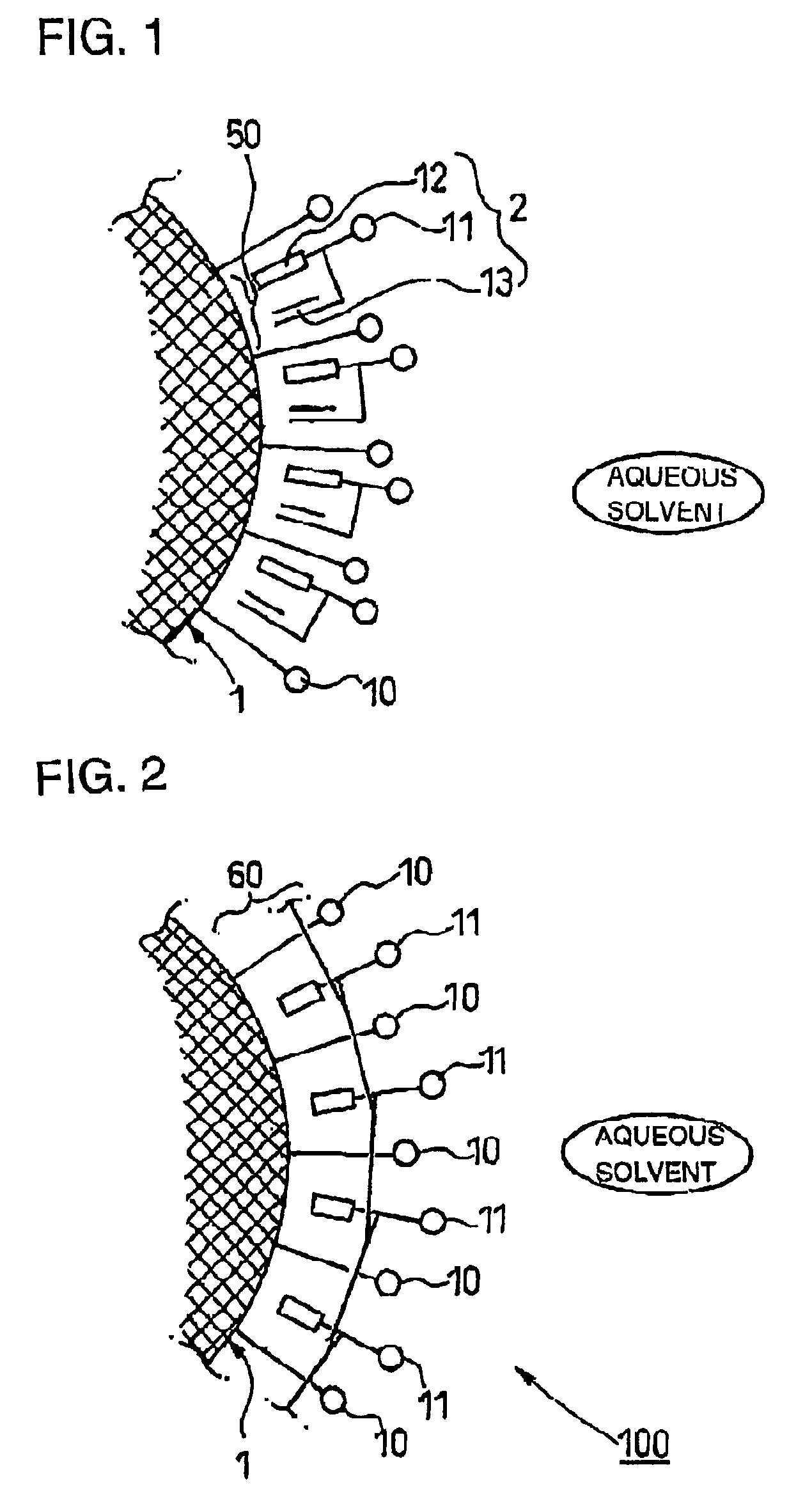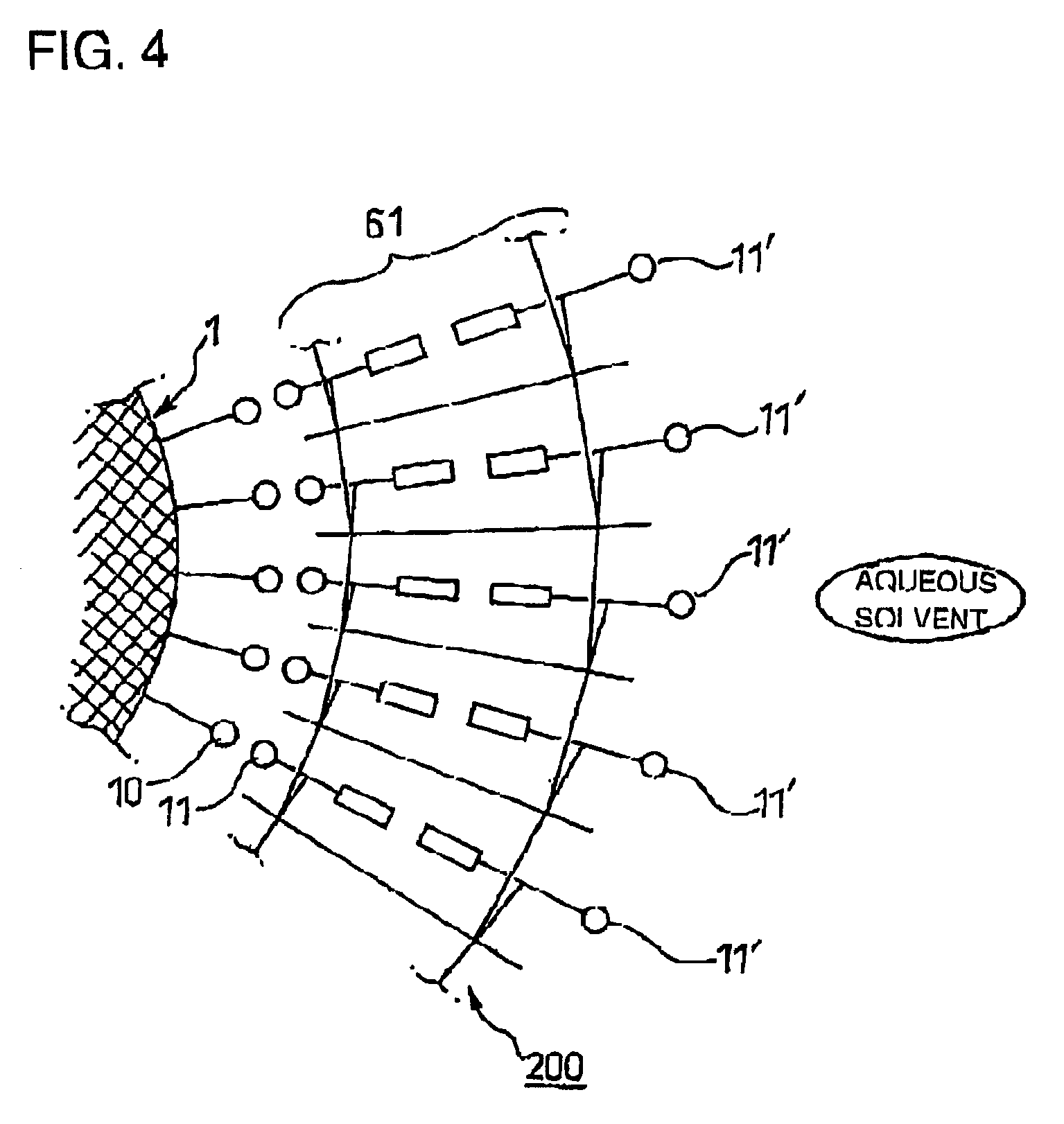Microencapsulated pigment, production process therefor, aqueous dispersion and ink jet recording ink
a technology of microencapsulation and pigment, which is applied in the direction of pigment treatment with macromolecular organic compounds, inks, transportation and packaging, etc., can solve the problems of inability to control ink physical properties such as viscosity within the designed range, and inability to achieve sufficient image density, etc., to achieve excellent fastness, high stability, and high dispersion stability
- Summary
- Abstract
- Description
- Claims
- Application Information
AI Technical Summary
Benefits of technology
Problems solved by technology
Method used
Image
Examples
first embodiment
[I] FIRST EMBODIMENT
[0110]The microencapsulated pigment according to the first embodiment comprises pigment particles having a hydrophilic group on the surface thereof and being coated with a polymer, wherein the polymer comprises a repeating unit derived from a polymerizable surface active agent having a hydrophilic group, a hydrophobic group, and a polymerizable group. The microencapsulated pigment of the first embodiment is conveniently produced by a process comprising the steps of adding a polymerizable surface active agent and a polymerization initiator to an aqueous dispersion having pigment particles dispersed therein and subjecting the system to emulsion polymerization. The disperse states the pigment particles could take in this process will herein be called “a first disperse state” and “a second disperse state”, which will be illustrated hereunder by way of FIGS. 1 through 4. Note that the description contains theoretical assumptions.
First Disperse State:
[0111]FIG. 1 illus...
second embodiment
[II] SECOND EMBODIMENT
[0183]The microencapsulated pigment according to the second embodiment of the invention is characterized in that pigment particles having an anionic group as a hydrophilic group on their surface are coated with a polymer produced by polymerizing a hydrophilic monomer with the aid of a polymerization initiator having a cationic group. The microencapsulated pigment of the second embodiment is conveniently produced by a process comprising the steps of mixing a polymerization initiator having a cationic group with an aqueous dispersion of pigment particles having an anionic hydrophilic group on their surface under a condition that does not activate the polymerization initiator, adding a hydrophilic monomer and a surface active agent to the dispersion, and activating the polymerization initiator to carry out emulsion polymerization to thereby coat the pigment particles with a polymer. The process will be described with reference to a disperse state the pigment parti...
third embodiment
[III] THIRD EMBODIMENT
[0211]The microencapsulated pigment according to the third embodiment of the present invention is characterized in that pigment particles having a hydrophilic group on their surface (hydrophilized pigment particles) are coated with a polymer obtained by polymerizing a polymerizable surface active agent having a hydrophilic group, a hydrophobic group and a polymerizable group and / or a hydrophilic monomer by using a polymeric azo initiator comprising a repeating unit represented by formula (I):
[0212]
wherein D represents a portion having at least a hydrophobic segment; L1 and L2, which may be the same or different, each represent a linking group; R1, R2, R3, and R4 each represent an alkyl group having 1 to 4 carbon atoms or a cyano group; and n represents an integer of 1 or greater.
[0213]The microencapsulated pigment of the third embodiment is conveniently produced by a process comprising the steps of mixing the polymeric azo initiator comprising a repeating unit ...
PUM
| Property | Measurement | Unit |
|---|---|---|
| boiling point | aaaaa | aaaaa |
| aspect ratio | aaaaa | aaaaa |
| particle size | aaaaa | aaaaa |
Abstract
Description
Claims
Application Information
 Login to View More
Login to View More - R&D
- Intellectual Property
- Life Sciences
- Materials
- Tech Scout
- Unparalleled Data Quality
- Higher Quality Content
- 60% Fewer Hallucinations
Browse by: Latest US Patents, China's latest patents, Technical Efficacy Thesaurus, Application Domain, Technology Topic, Popular Technical Reports.
© 2025 PatSnap. All rights reserved.Legal|Privacy policy|Modern Slavery Act Transparency Statement|Sitemap|About US| Contact US: help@patsnap.com



